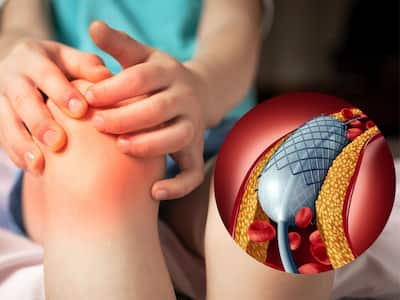
High cholesterol, a known risk factor for declining heart health, may have an adverse effect on our cardiovascular systems in addition to causing bone loss. To learn more, keep reading.
Cholesterol is a very common health ailment that is often associated with cardiovascular health and the risk of heart disease. It is estimated that almost 25 30% of the urban and 15 20% rural population in India suffers from high cholesterol problems. However, very less people know that uncontrolled cholesterol can also influence bone health. Are you interested in learning how high cholesterol harms bones? Let’s examine this carefully.
Dr. Ashwani Maichand, Director of the Orthopaedics Department at the CK Birla Hospital in Delhi, will discuss the link between high cholesterol and bone loss in this article as well as ways to safeguard the body against consequences.
Understanding Cholesterol and Bone Health
Cholesterol is a fatty substance produced by the liver and also obtained from certain foods. It is essential for the normal functioning of the body, as it is involved in various processes, including hormone production, cell membrane formation, and bile acid synthesis. Some ways in which it can impact the bones include:
Altered Bone Remodelling
Cholesterol may affect the process of bone remodelling, which is the continuous cycle of bone breakdown and formation that maintains bone strength. Disruptions in this delicate balance can contribute to bone loss. Elevated cholesterol levels can impact osteoblasts, cells responsible for bone formation, and increase osteoclast activity, cells involved in bone resorption. This imbalance can lead to a net loss of bone mass over time.
Osteoporosis
High cholesterol levels may lead to the development of osteoporosis, a disorder characterised by brittle and weak bones. Cholesterol in excess can alter the equilibrium between bone growth and resorption, resulting in lower bone density and an increased risk of fracture.
Fractures
High cholesterol levels can weaken bones, making them more prone to fractures, even from mild traumas. Uncontrolled cholesterol levels may lead to more frequent and severe fractures, notably in the hip, spine, and wrists.
READ RELATED: CoWIN Portal Blamed For Data Breach: What Cybersecurity Experts Have To Say
Inflammation And Oxidative Stress
High cholesterol levels are often associated with chronic inflammation and oxidative stress, both of which can negatively impact bone health. Inflammatory markers and oxidative stress markers have been linked to bone loss and increased fracture risk. These factors may contribute to the development of osteoporosis and impair the body’s ability to repair and maintain healthy bone tissue.
Medications And Bone Health
Certain cholesterol-lowering medications, such as statins, have been suggested to have potential benefits for bone health.
Precautions and Lifestyle Changes
There are certain tips one may take to reduce the possible impact of unmanaged cholesterol on bone health:
- Healthy diet: Adopting a heart-healthy diet rich in fruits, vegetables, whole grains, and lean meats can help manage cholesterol levels and promote bone health.
- Exercise: Regular activity, such as walking, running, or weightlifting, helps encourage bone development and density.
- Manage Cholesterol Levels: Regular monitoring of cholesterol levels and collaboration with healthcare specialists to design an appropriate treatment plan can help maintain healthy cholesterol levels.
- Vitamin D and Calcium Intake: Getting enough vitamin D and calcium from sunshine and food sources such as dairy products, leafy greens, and supplements can help with bone health.
Disclaimer: This article is meant for informational purposes only and must not be considered a substitute for advice provided by qualified medical professionals.
Total Wellness is now just a click away.
Follow us on
window.addEventListener(‘load’, (event) => {
$(‘#commentbtn’).on(“click”,function(){
(function(d, s, id) { var js, fjs = d.getElementsByTagName(s)[0]; if (d.getElementById(id)) return; js = d.createElement(s); js.id = id; js.src = “//connect.facebook.net/en_US/sdk.js#xfbml=1&version=v2.3”; fjs.parentNode.insertBefore(js, fjs);}(document, ‘script’, ‘facebook-jssdk’));
$(“.cmntbox”).toggle();
});
});







